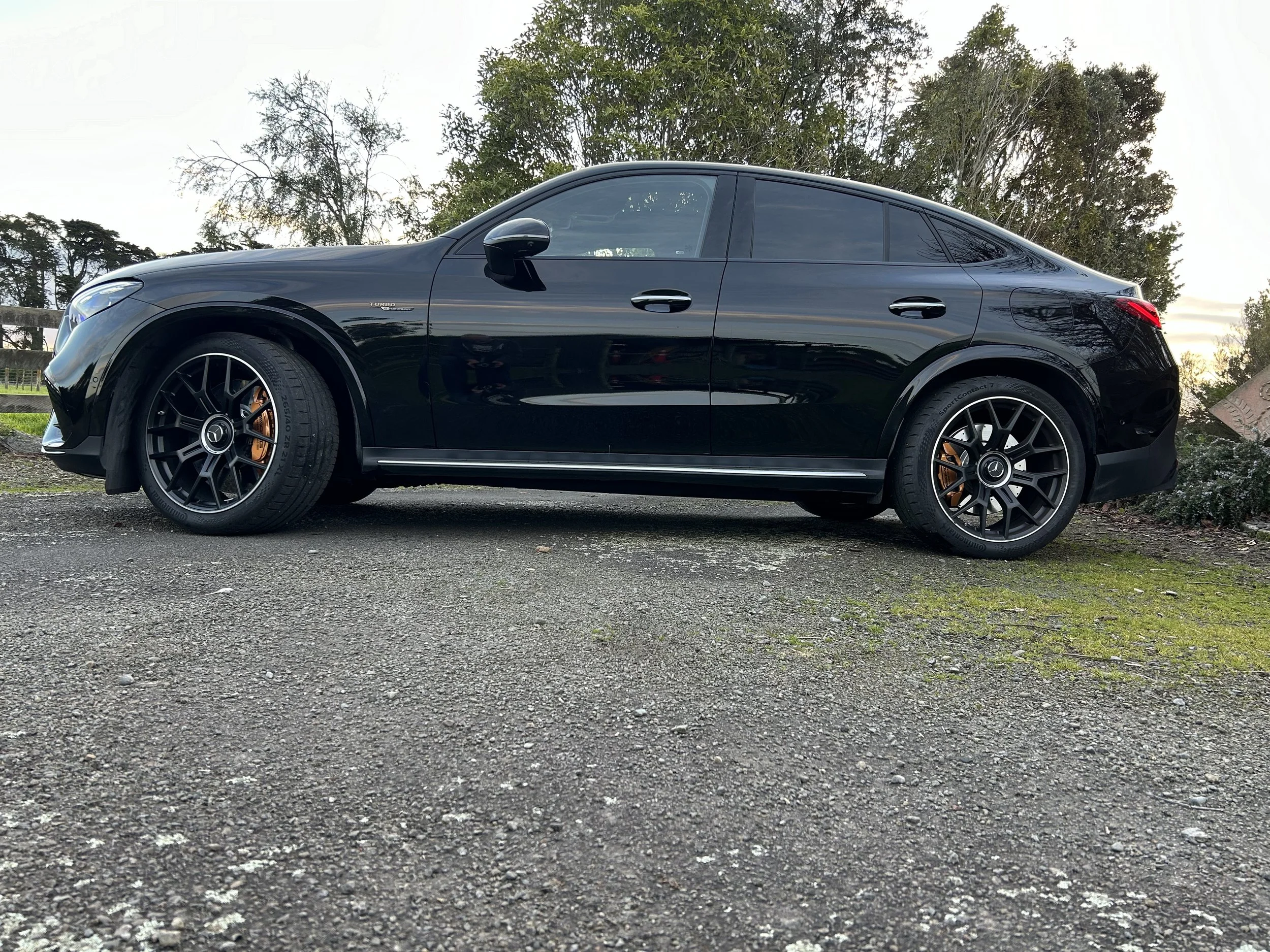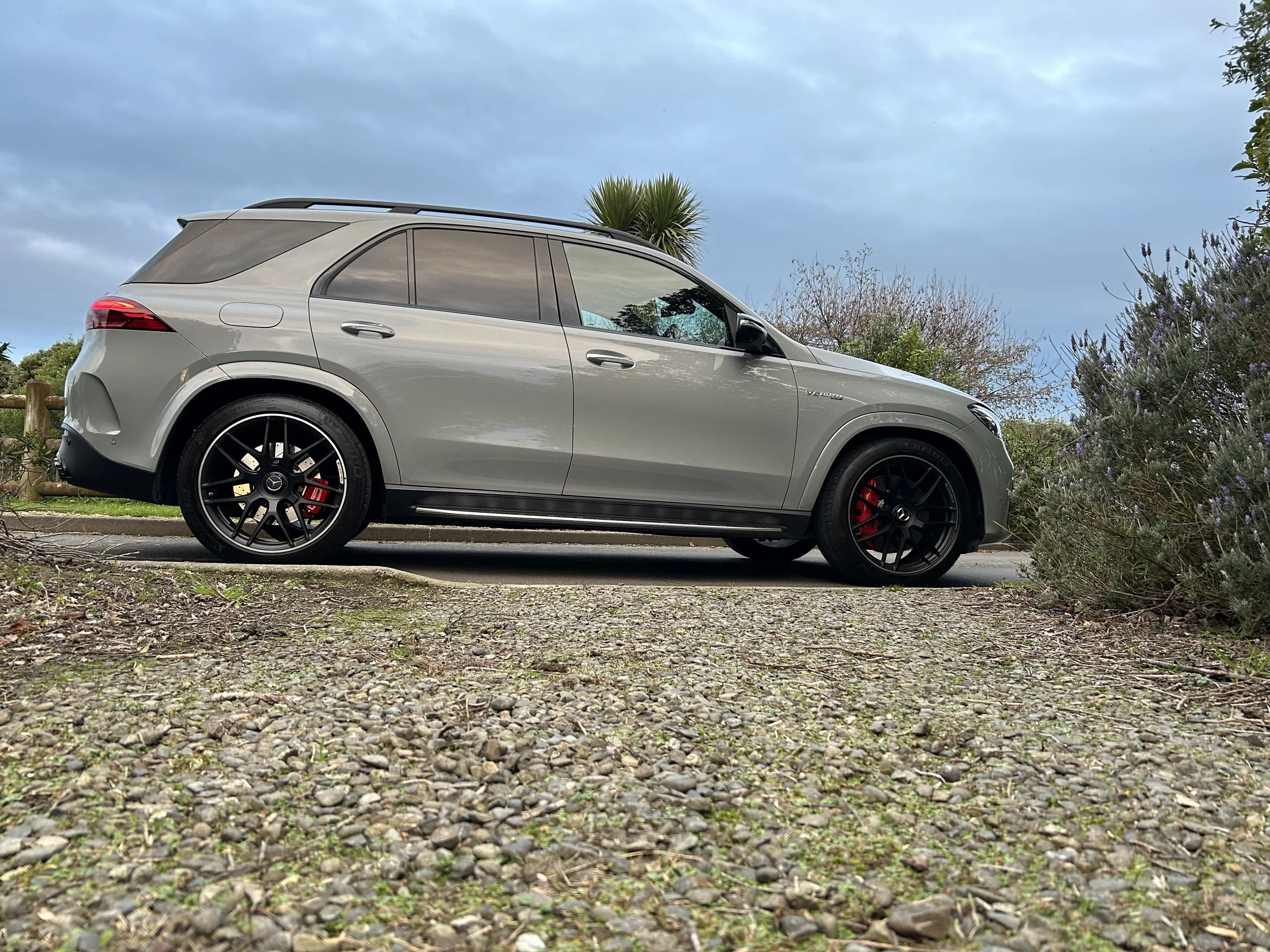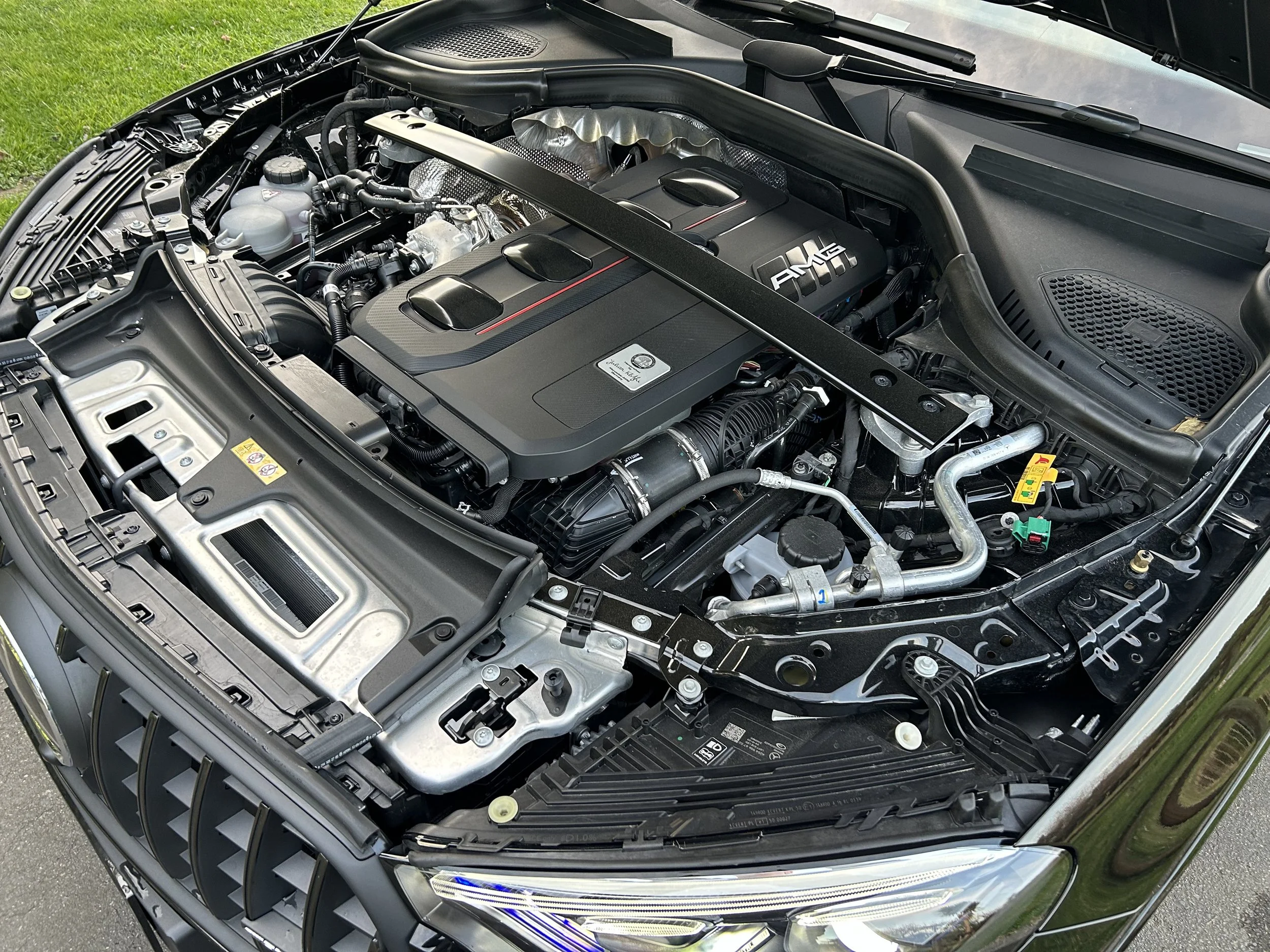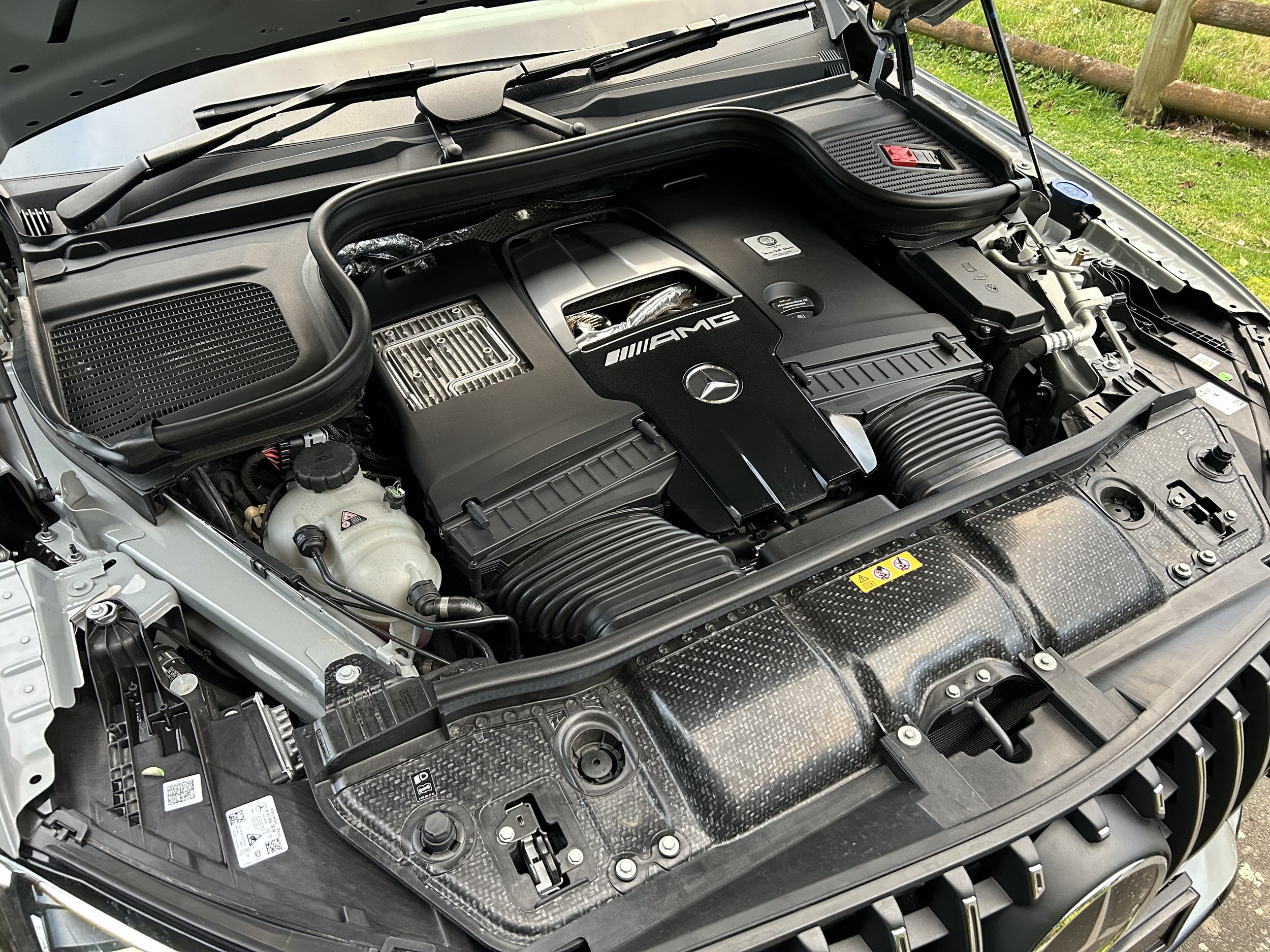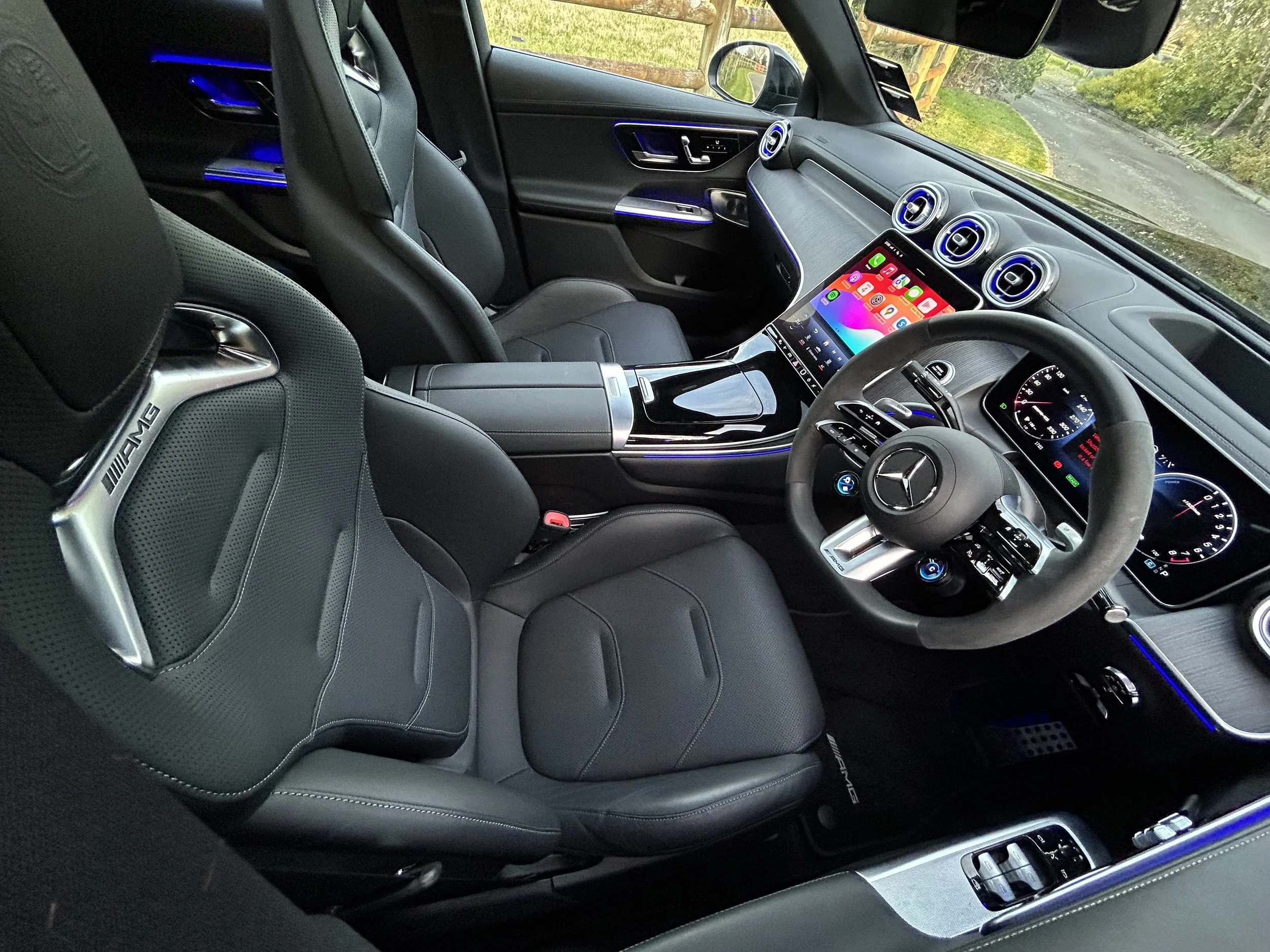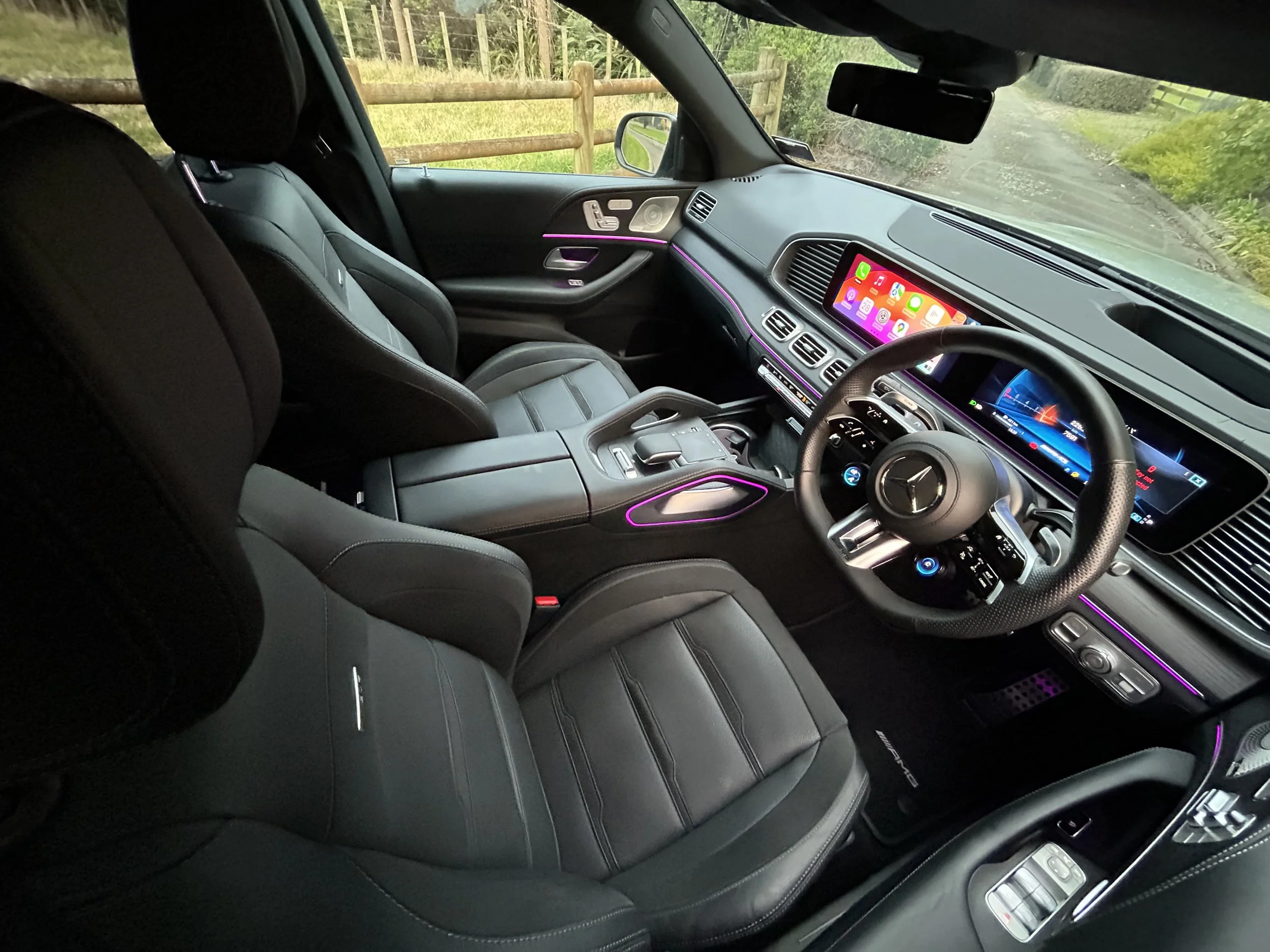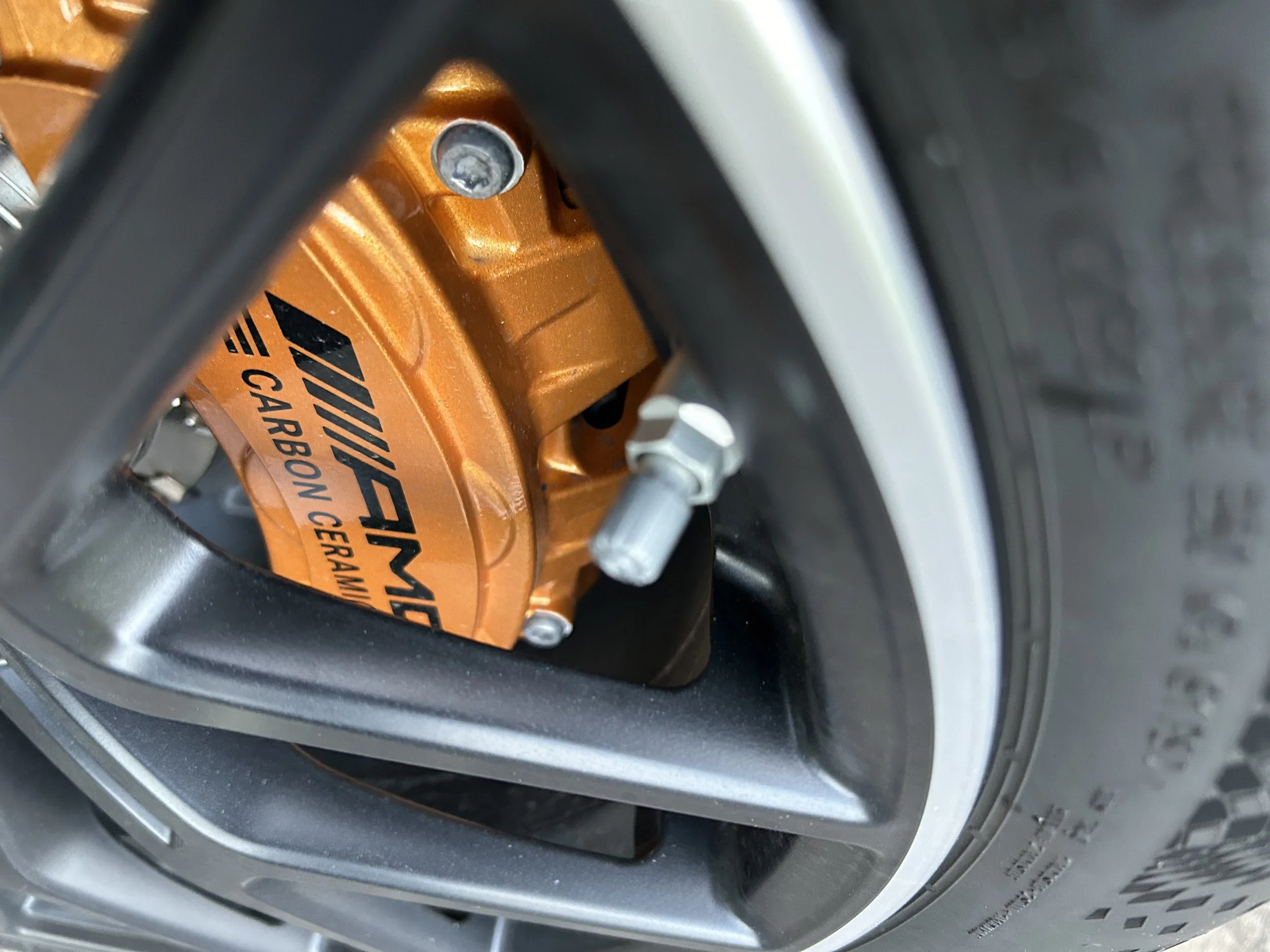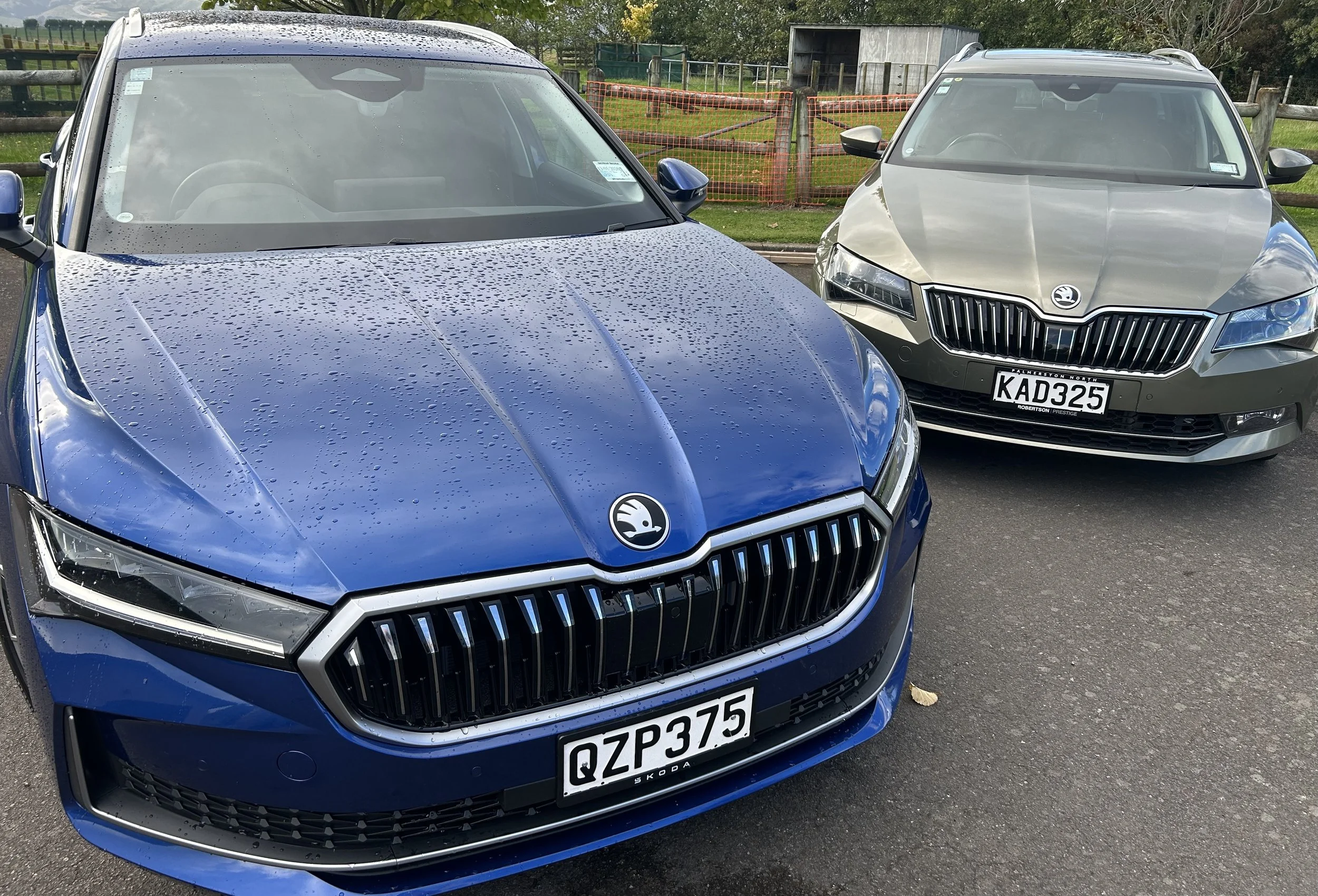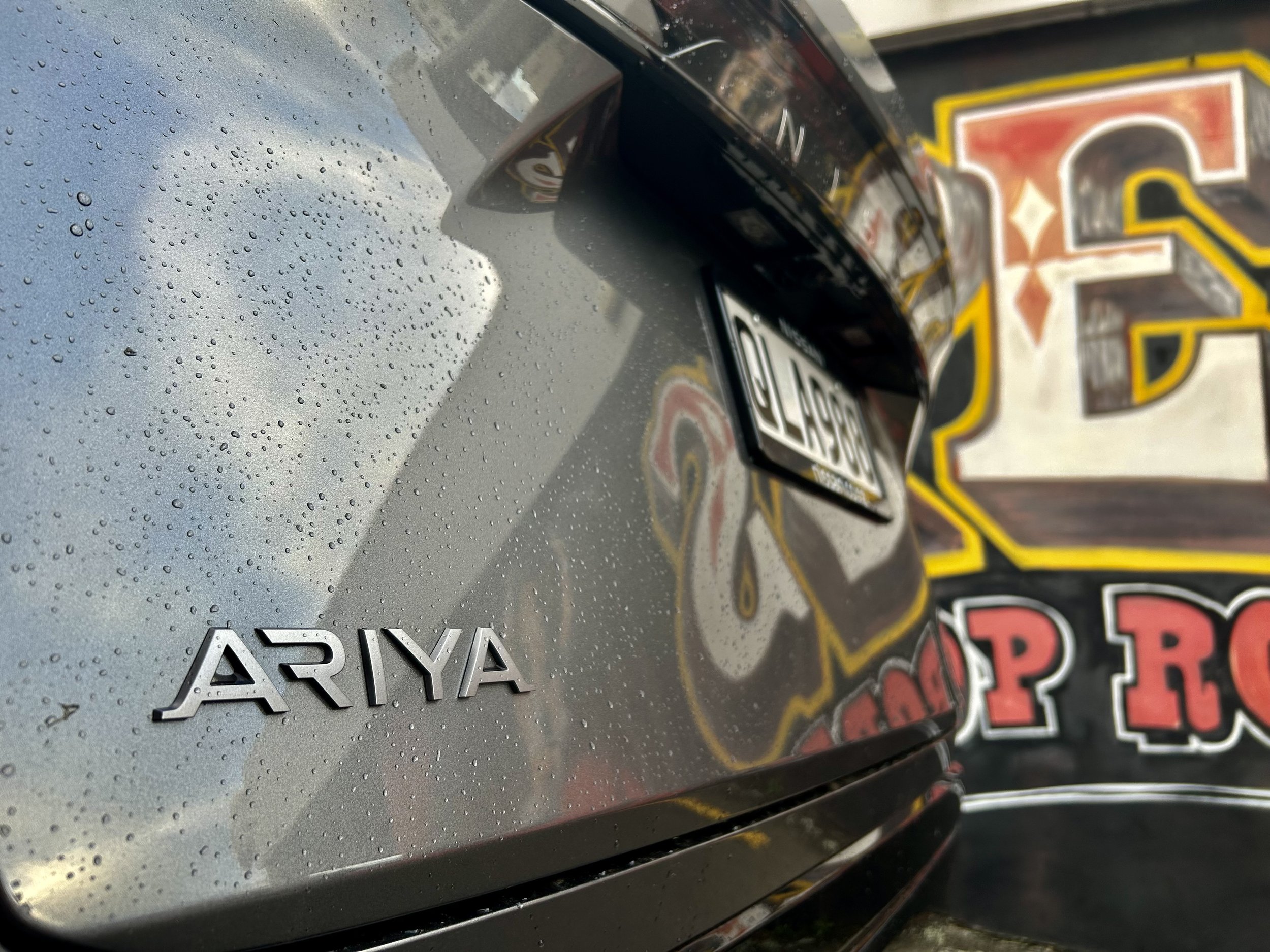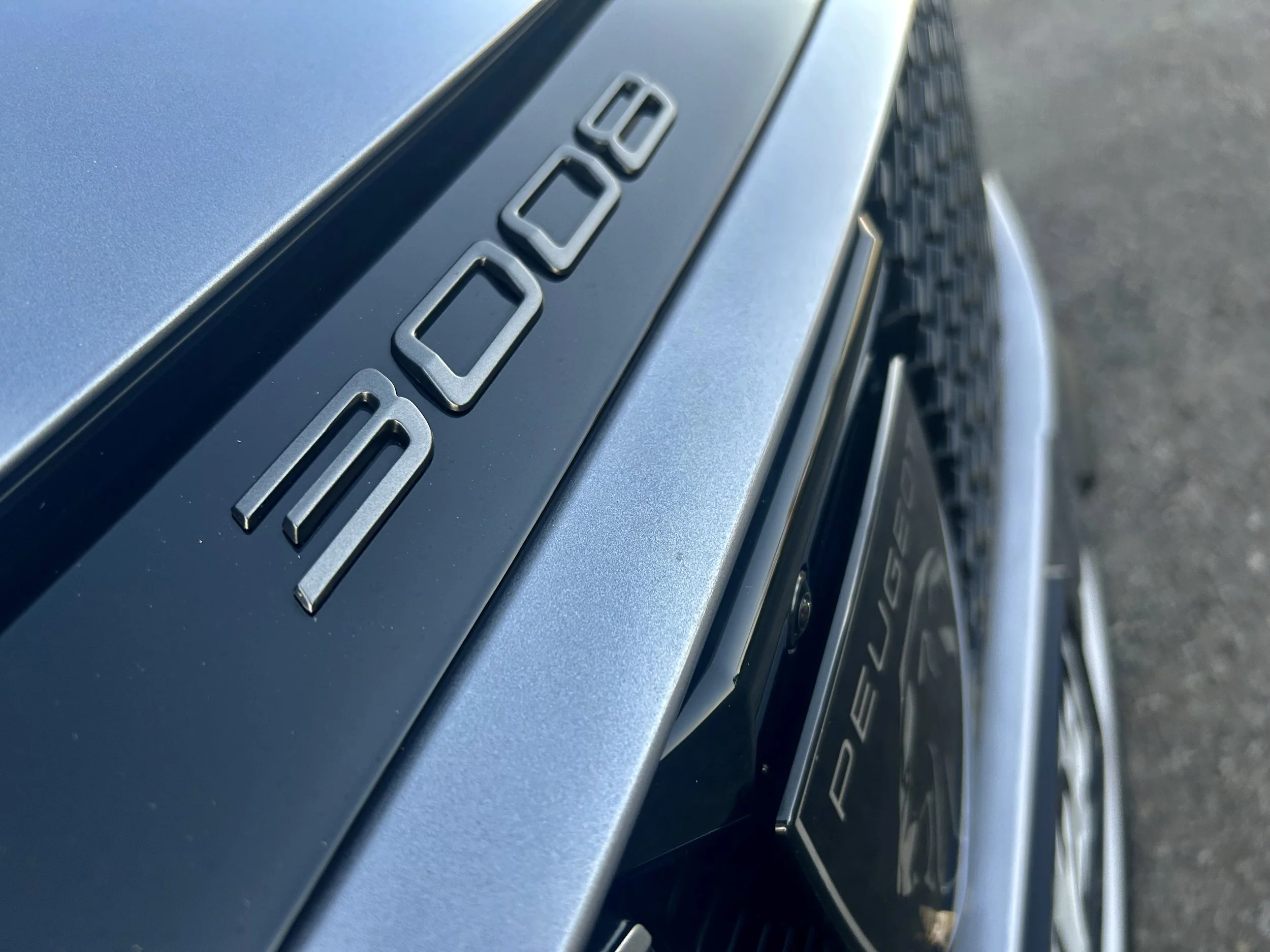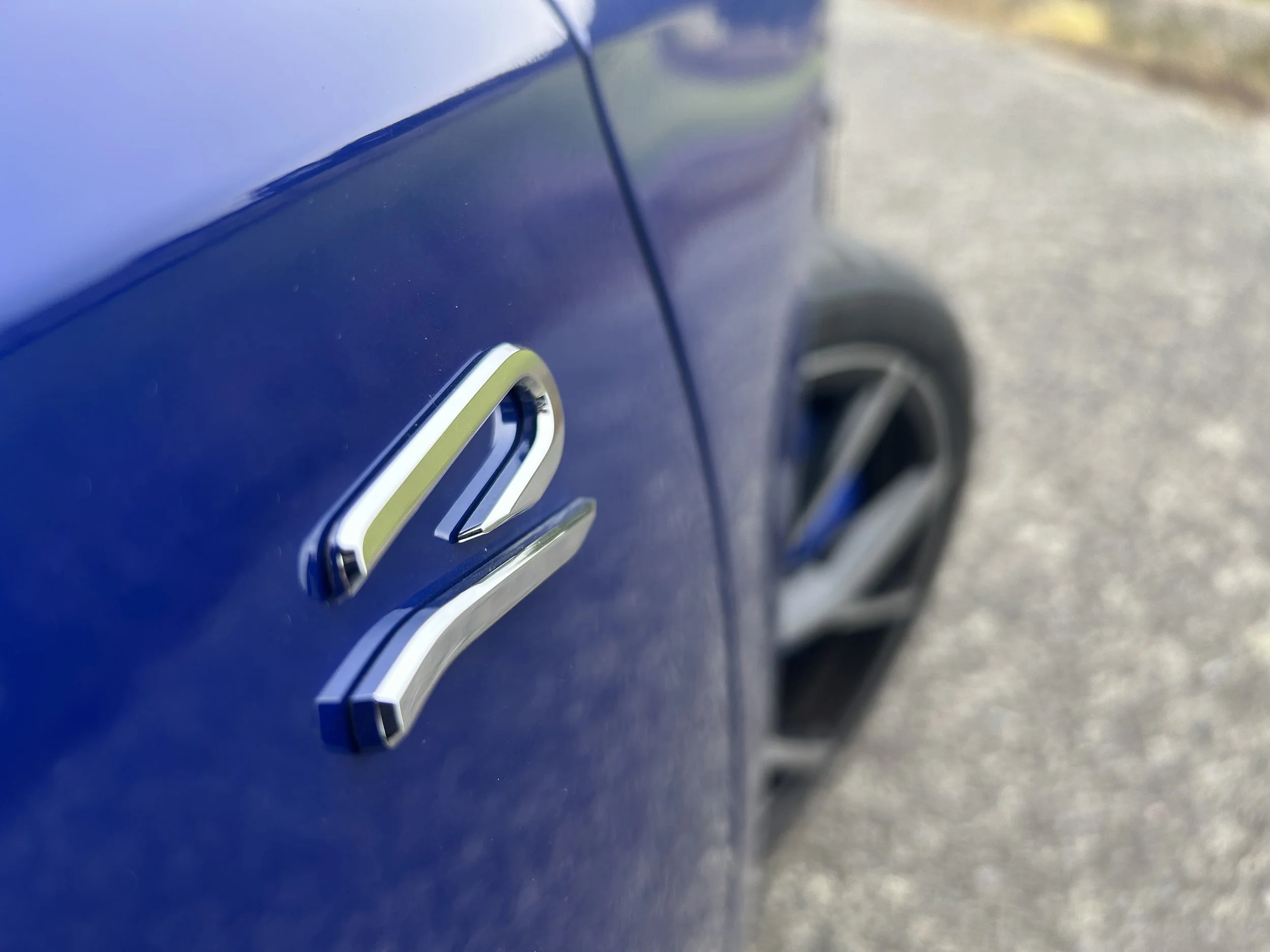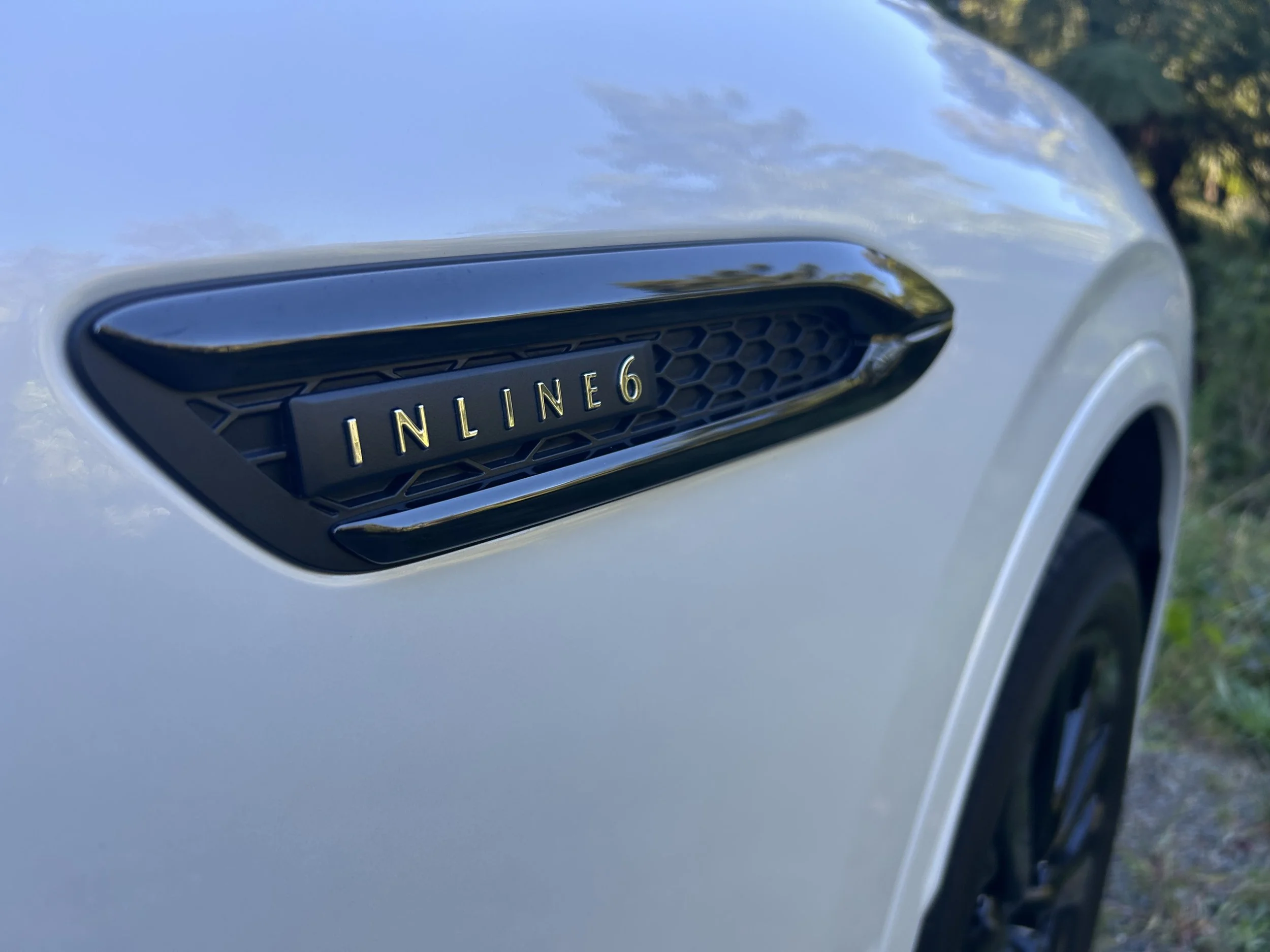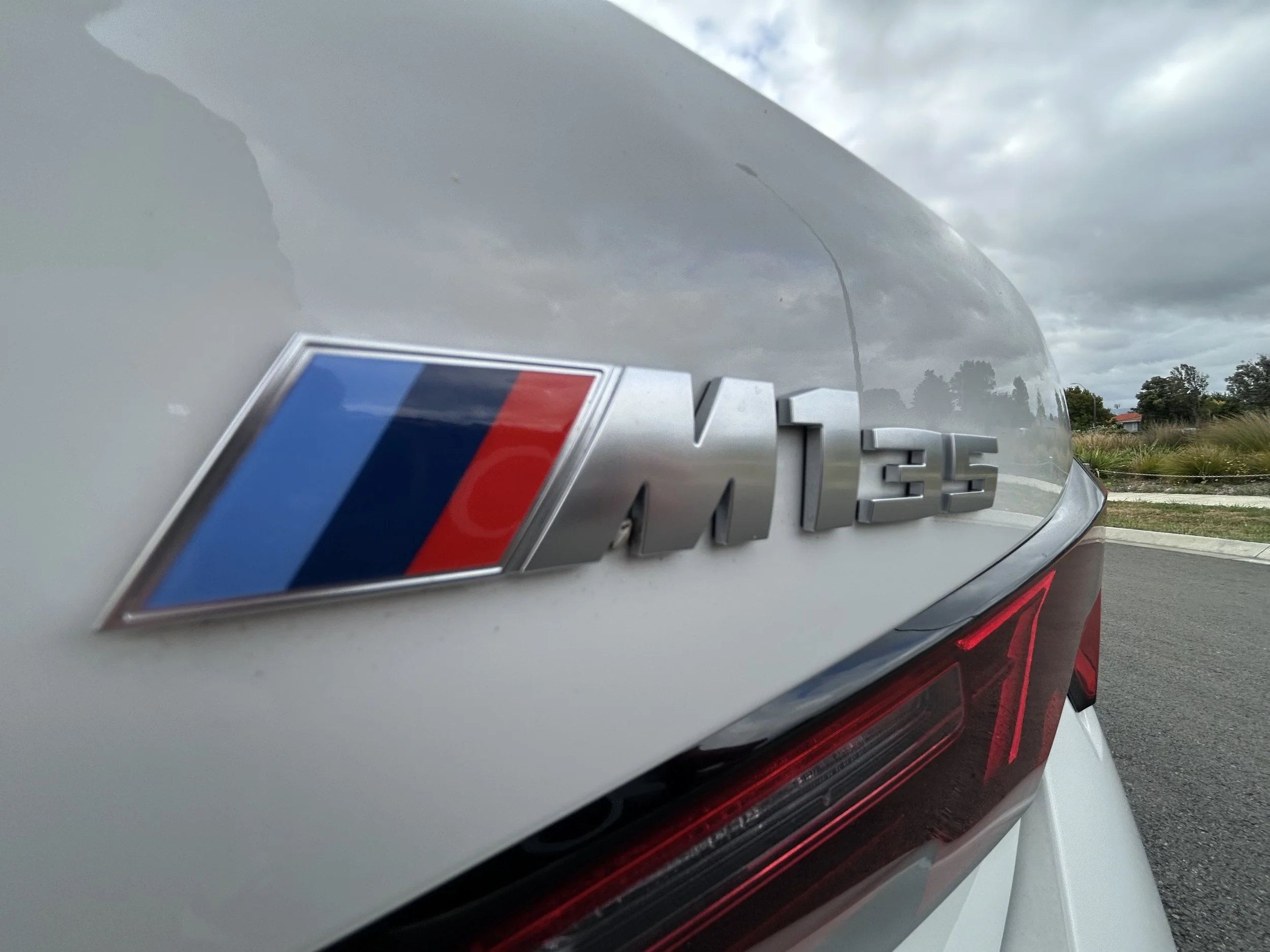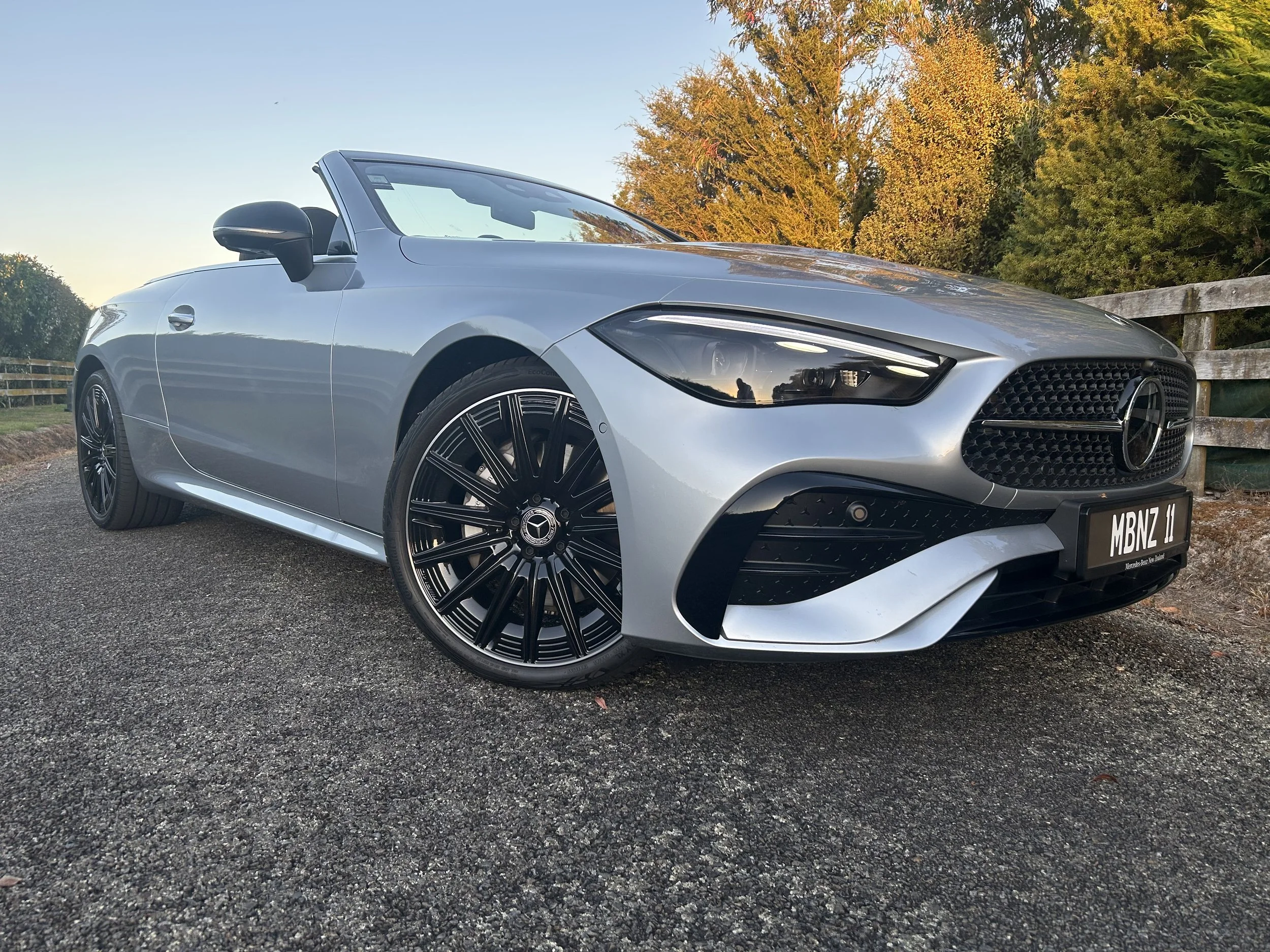Mercedes-AMG GLC 63 S Coupe road test review: Another to the four
/The sportiest edition of Benz’s compact sports utility no longer being a V8 doesn’t dilute the powerhouse appeal. But the flavour change is obvious.
Price: $206,900 ($222,100 as tested)
Engine: 2.0-litre four-cylinder turbo petrol with hybrid electric assist with 6.1kWh battery, 500kW/1020Nm petrol.
Transmission: Nine-speed automatic, four-wheel-drive.
Dimensions: Length, 4764mm; width, 1890mm; height, 1605mm.
We like: An exemplar of quality engineering; impressively efficient drivetrain; elegantly tailored interior.
Not so much: It’s a better drivetrain, but needs more aural intensity; carbon brake option over the top; expensive against GLC 300 that fulfils equally well for functionality.
TWO consecutive weeks with Mercedes sports utilities in full phwoar footing - one old school, the other new wave.
AMG-sorted SUVs are in high demand, and the top drawer ’63’ product is where performance-buying bucks often stop.
The adage about there being ‘ no replacement for displacement’?
Mercedes-Benz no longer believes that to the the case. Hence why the V8 is retiring, it’s job going to a fancy F1-flavoured four-cylinder.
Altering the perception and understanding of just what a performance engine can be is a big ask. Logically, what we’re getting into now is smarter and sensible, crucial too. But emotionally? Tears and tantrums.
The GLC AMG 63 S Coupe that’s the subject of today’s test is a slightly more glamorous sister to the regular GLC 63 S, using the same muscular powertrain as the C 63 S sedan, in a sports utility packaging with a swoopy roofline to add to the visual appeal.
Strong image and stand out street presence, style and performance make this model hugely desirable. As an elite end car, it is also quite expensive. In pure factory format, it holds a $7000 premium over the SUV.
This example widened the gap with had options of a $6900 ergonomics pack adding an AMG Performance steering wheel wrapped in Nappa leather and microfibre, AMG Performance front seats and multi-contour rear pews, and $8300 carbon ceramic brakes (hence the gold callipers). The total price came to a premium of around $110k above the GLC 300 Coupe driven earlier this year.
What’s most relevant is that this is the second Affalterbach product to subscribe to the new-era engine approach; the C 63 being first. For both, despite occasional scuttlebutt to the contrary, the V8 is gone. For good.
Elsewhere, there’s still a chance to experience it. In the week before driving the GLC, I had a period in the next size-up GLE 63 S wagon (the grey car pictured).
The kinship is clear in their styling, stance and dynamic aptitude. The ’sports’ part of SUV always asks for some degree of reality check, because these aren’t cars that can be thrown around with complete abandon. But on some roads you will forget you're steering something so big and tall.
Also apparent all the same is that these are models from different eras, with age unavoidably showing.
One big clue is the instrumentation layout. Though it still operates logically, the whole set up in the GLE is a generation behind GLC’s.
Where they stand truly apart is with what’s under the bonnet, GLE being a last outpost, within the brand’s SUV showing, for the 4.0-litre biturbo V8.
For how much longer? GLE only adopted the twin turbo 4.0-litre four years ago - before then it ran the 5.5-litre born in the late 1990s - so it’ll stay as an eight until a complete model change.
Even so, in all likelihood, this was going to be my chance of saying goodbye. I’d be lying if I said handing back at the end wasn’t without emotion. The V8’s appeal goes beyond it having enough grunt to embarrass many sports cars; the new four has even more of that.
What alters is the vibe. The four is visceral when its voice is fully liberated, no argument, and how it adds gratuitous pops and bangs on the overrun is quite a party piece. Yet the GLE spells an end to one of the enduring AMG attractions for eons – a fruity, rumbling exhaust note. It’s a special thing, no argument; the echoes stayed in my head during the time with the new choice.
Yet that final run reminded that, if the thunder is a draw, then pretty much all else is a drawback.
Buying an AMG isn’t a cheap exercise; feeding this particular one isn’t either. And while it’s fair to assume many of those who commit to this brand probably won’t be scratching for loose change, the price of fuel keeps heading in just one direction, right? Regardless, the death knell is legislation. High CO2 counts are a problem no car maker can steer away from. The world’s oldest has decided it has no alternative but to face up to a crisis of climate.
Even if it leaves you in emotional turmoil, there surely has to be acceptance that the new power plant is quite special.
Placement in the medium SUV is just the second application, following on from debut in the C 63 S sedan tested earlier. As related in that assessment, the outcomes availed by this 2.0-litre turbocharged petrol plug-in arrive via a massively technical and highly complex route.
The finer points were previously unpacked, so no need to repeat. Suffice to say a considerable degree of application is Formula One grade. That it has found a place in a passenger car speaks volumes about Mercedes’ commitment and vision.
Inasmuch as ‘what it is’ raises argument, what it does is hard to counter, because it effectively delivers the impossible. In that, as much as the outputs seem almost inconceivable given its capacity, so are the optimisations.
The plug-in aspect meaning is an AMG in which Road User Charge must be paid is a weirdness, yes, but it’s an edge that optimally allows a genuine chance to run on battery alone for up to 14 kilometres; not much a distance really, but more than enough to make for quiet early morning getaways through your neighbourhood.
That side ends when the battery reaches a low state, but it actually never depletes, so there’s always something in reserve to continue a degree of interaction.
To point that while this is not an outright thrifty car - AMG does not make those - it nonetheless will consume less fuel, even when driven with no care for economy, than the V8 might even when light-footed.
After 449 kilometres’ driving, the GLC 63 was showing a consumption average of 9.4 litres per 100km. After 433km, the GLE 63 had - largely due to being light-footed on its final open road run to point where just four cylinders were activating - come down to 10.7L/100m, having spent most of the time on test at 15.4. Gulp indeed.
Sounds simple, but there’s more to it. When pottering in EV mode, you’re using no fuel at all. That’s obvious. But also only fleeting For most driving, you’re in Comfort mode or stronger; there and thereafter the car manage the changes between petrol and electric. Patently, it’ll sip if you go quietly, not so much if the hammer comes down. In the first state, the more electric involvement, the greater it guzzles electrons.
Alternately, when running hard, the petrol consumption climbs - to quite high peaks - but, at same time, it acts more energetically in recharging the battery. It’s a perpetual swing between good and bad, with each side taking turns to shine or otherwise.
Driving the GLC 63 enforced an impression made by the C 63; that the anger management with the four is clearly wholly different to the V8. Intending owners need to understand that the car isn’t as analogue as it once was.
With all the V8s you got a fairly simply weapon. Big engine with an easy going. loping power delivery. You simply pointed, pressed hard on the throttle, then unleashed.
As I’ve previously said, calling the four-cylinder ‘complex’ is almost too simplistic; so while the outputs are awesome, what’s clear is that it is no mere swing and smash device.
The GLC has the same number of modes and possible settings that opportune the driver of the C 63 and, as in that choice, the selection initially seems quite overwhelming, with screens within screens of involvement, including a sub-page with the extreme performance mode chapter that has templates of fantastic circuits onto which you can overlay your lap times. It will take a while to figure it all out.
Not that this is necessary. Even if driven without fiddling with modes, truly eye-watering performance is easily accomplished. Because it’s heavier, taller and a big less wind-cheating, the GLC 63 is a touch slower than the C 63. But only a touch. This engine will take you from 0-100kmh in a scorching 3.5 seconds and will keep going to 275kmh with the AMG Driver’s Package, which is included as standard on NZ-delivered cars. That ceramic composite braking system is the ultimate extra for that offer, but would you?
The standard stoppers are still composite units and are clamped by fixed six-piston callipers at the front and floating single-piston units at the rear, so hardly set to shirk even in the unlikely event of this car being taken onto a circuit.
Also, this car demonstrated the usual drawback of ceramics; they take a little while to warm up and, until that happens, you not only get a bit of judder and squeal but also need to think about allowing more room for your stopping distances; if first initiation is as mine was, in heavy city traffic, then it can be very focussing.
Such power is useless if it can't be deployed, though, and a 4MATIC plus four-wheel-drive system ensures that every single horsepower can be enjoyed.
It’s thumping … with real push, too. That’s the effect, I’m sure, of what’s mounted to the rear axle. That’s a 152kW electric motor, which gets its own discrete, two-speed transmission. Fed by a 6.1kW battery sited above it, that motor acts directly on the rear wheels for maximum response time, but it can also turn the front wheels, if needed, through a complex driveshaft system. When experienced in the C 63 S sedan, this occasionally seemed to introduce with a jolting bang. What I thought was a trademark then might have been just that car; as the GLC didn’t evidence this, ever.
The GLC as Mercedes itself makes is a nice driving machine; there’s genuine dynamic character and this time around it has better ride comfort; the brittleness the previous type exhibited on coarse ship has gone.
As expected, the AMG is more assertive on that side of things; Active Ride Control adaptive suspension is included as standard, along with an electromechanical anti-body roll system in place of rigid swaybars, so the body is far less prone to leaning in corners than more prosaic SUVs and the regular GLCs. How much yield you get from the suspension very much depends on what mode you pick; my advice is to reserve the performance settings for press-on driving, not least if you have passengers on board, else all you will hear is teeth chatter.
When pushing the envelope, you’ll also want to mess with the three-stage AMG speed-sensitive steering system and will appreciate the rear-wheel steering and the very sticky 21-inch tyres.
AMG’s a pro at taking Mercedes’ invariably elegant bodies and injecting some welcome muscle into them; the GLC is less brutal looking than the GLE, but still immediately stands out as being obviously special, with has loads of presence and a great stance.
The four gets the same power-domed bonnet as the V8; flared wheel arches broaden the donor shells, with the track widths increased to suit, and the GLC adopts unique bumpers, skirts and spoilers, as well as the AMG Night Package II, which blacks out the grille and badges. Quad exhausts span both, but only the eight needs them. AMG cross-spoke forged wheels look brilliant, but might become the devil’s own work to keep clean.
Quality is high, too: the GLC has one of the most attractive interiors of any SUV of this size; AMG’s enhancement of this in beautifully appointed cabin resists despoiling the factory’s good work and basically adds some typical sports-car-like signifiers.
The optional sports seats are good, but deeply sculpted, so if they are not to liking stick with the standard items, also Nappa leather-upholstered and heated.
The coupe’s roofline is significantly slinkier in look than the standard SUV type’s, but concerns about it being severely injurious to rear headroom can be allayed; yes, it’s cosier in the back, but more due to the smaller side glass shape reducing the level of natural light, regardless it has a panoramic sliding sunroof.
Space-wise it is not too bad, with the rear seats just about capable of accommodating average-sized adults. The boot is a healthy capacity too, so will swallow plenty of luggage.
The GLC’s latest layout demands more direct screen involvement than the GLE’s, and takes a little familiarisation to get used to it all, but is not too intensive.
Both the dress up to impress with their specifications. Dual-zone climate control, smartphone integration, wireless charging pad and so on span these models. The AMG type in latest form goes classy with more than that MBUX system. The multimedia side plays through a Burmester 3D surround sound system, it also gets augmented reality sat-nav, which is excellent.
When approaching junctions it takes the view from the car’s forward camera and beams it onto the central screen, then overlays the image with blue ‘floating’ arrows to show you precisely which road or exit to take - it also repeats these arrows in the head-up display for good measure. It’s a brilliant setup up. Whether the same goes for the GLC’s AMG Performance multifunction steering wheel depends on how savvy you are with multiple haptics; it’s busier than the GLC’s more analogue affair.
Driver-assist tech is headlined by adaptive cruise control, active lane keeping assist, blind spot assist, traffic light assist, adaptive high beam, a 360-degree camera, active parking assist and the PRE-SAFE collision preparation system.
A generally less strident soundtrack now doesn’t diminish impression there’s little problem with the way the GLC goes about its business when you did into the performance side.
Traction is all but unimpeachable in the dry and those tyres provide enormous amounts of mechanical grip, so that you can really lean on the chassis in corners to get through them at pace. The engine and gearbox work differently here than in the V8 set-up, but also don’t disappoint, as they are both quick to react to throttle inputs.
The big lesson from this fortnight of old and new? AMG has a glorious past but there’s nothing to suggest it won’t also have a positive future. Things are certainly different now, but why be disappointed? Like all brands, Benz’s future is electric, but in the interim this is where it is at. The AMG element for GLC simply further lifts the qualities of a car that hits all targets with absolute accuracy.


